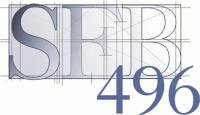|
Project
C1:
Symbolic Construction of Status and Rank in the Early Modern Period
| Abstract |
The project explores the ways in which the politico-social order of status and rank in Early Modern Times was, by means of symbolic acts, established and stabilized, challenged and defended, changed and balanced anew. This happened, first, through everyday symbolic interaction, through seating arrangements, gestures etc.; then through “solemn” public rituals in which – pars pro toto – the order as a whole was represented - in the double sense of the term, i.e. at the same time produced and displayed - and finally through mises-en-scène of ‘a second order’ in text and image.
While in its first phase the project's field of interest mainly included the formation of status and rank in the city, at universities and in assemblies of the estates, now the symbolic practices of diplomatic interactions are brought into focus. Essential specifics of early modern ‘policy of states’ become only accessible when regarded as personal interaction of individual actors, i.e. when one takes into account the social imperatives of rank and honour, kinship, friendship and aegis. Analysing the systems of diplomatic interaction implies special attention to the borders and limits in and of symbolic communication, which constitute as well the core theme of the whole Collaborative Research Center’s last funding phase.
|
